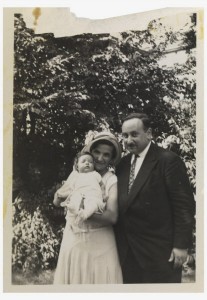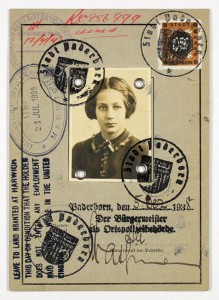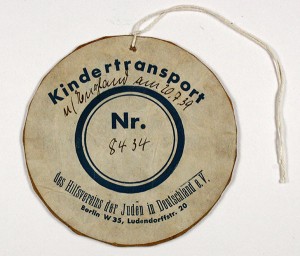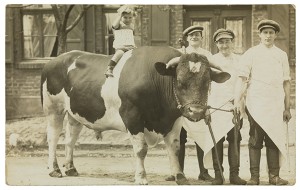
Gisela and Philipp Kozower with their daughter Eva in August of 1932
© Friends of the Jewish Museum New York, Princeton; photographer: unknown, donated by Klaus M. Zwilsky
Lawyer Philipp Kozower was 37 when he married the 23-year-old medical student Gisela in 1931. A year later she gave birth to their first child, a daughter called Eva. The new parents had their picture taken with their baby in Berlin’s Monbijou Park: wearing a bright dress and straw hat, Gisela holds the baby towards the camera somewhat awkwardly, as if the picture should document that Eva exists.
By the time Eva’s sister Alice was born in 1934, the National Socialists had already enacted numerous laws against Jews as well as taken measures to exclude them from public life. Our online project “1933: The beginning of the end of German Jewry” presents a variety of source materials from the Jewish Museum Berlin’s archives that bear witness to the disenfranchisement of German Jews. A display case with photographs and letters in our permanent exhibition details the Kozower family’s story: → continue reading

Beate Rose’s childhood passport
© Jewish Museum Berlin, donated by Beatrice Steinberg
75 years ago today, on 2 December 1938, the first of the Kindertransport rescue missions arrived in England. Beatrice Steinberg (née Beate Rose), a benefactor of the Jewish Museum Berlin, was among the last of the Jewish children to be saved in this way, by mass evacuation from Nazi-occupied territories. In her memoirs, which are held in our archives, she recalls her departure from Germany in the summer of 1939:
“My mother took me to the train, which turned out to be one of the last Kindertransporte to England […]. I was so excited that I rushed up the station steps without even saying goodbye to my mother. She called me back. We gave each other a hug and a kiss, then I boarded the train. I stood at the window and we waved goodbye. That was the last time I ever saw her.”

Beate Rose’s number tag from the “Kindertransport” rescue mission
© Jewish Museum Berlin, donated by Beatrice Steinberg
For Beatrice, only twelve years old at the time, the trip was an adventure; for her parents, the decision to let her go off alone, into the unknown, must have been made in great despair. The mass evacuation of children was launched three weeks after the November pogrom. Beate’s father was a prisoner in Buchenwald concentration camp at the time. Like hundreds of thousands of Jewish men and women, her parents hoped to leave Germany as soon as possible. But which country would open its borders to the mass of refugees? Visa restrictions and a bewildering amount of red tape made emigration a protracted and arduous undertaking. → continue reading

Walter Brill on a bull in the town of Herzebrock, ca. 1913
© Jewish Museum Berlin, courtesy of Brill Family Archives
I first met Ralph Brill at the Jewish Museum Berlin in 2009. He was accompanying a donor, and it was only incidentally that I learned of his own interesting family history. Some months later he sent me copies of family photographs and documents, and I immediately realized that this impressive material was of historical importance. We were in frequent contact since then. In early 2013 Ralph Brill decided to donate all of his family holdings to the Jewish Museum Berlin. It was a most memorable day in May, when he visited Berlin with his children, Micah, Loren and Wade. The three young Brills had just obtained German citizenship, in addition to their American nationality. Present legislation assures this option to all, whose lives were affected by National Socialist persecution, as well as their descendants. The trip to Berlin was motivated by Micah, Loren and Wade’s interest in learning about their ancestors. It was the first time any of the three had set foot on German soil. → continue reading



